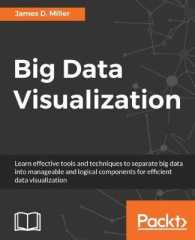Full Description
Childhood is defined in different preconceived manners by different discourses. Thus the categories defined by age such as infant, child, adolescent and so on, are to some extent arbitrary divisions that are subject to the evolution in clinical, societal, ideological and political discourses. Within psychoanalysis there has been a conflation of childhood construed through the retrospective memories of adults, and childhood as seen through the perspective of infant observations. In What is a Child? Michael Gerard Plastow argues that the place of the child as subject in the fullest sense has been neglected through these tendencies, and that such confusion has marked the history of the psychoanalysis of the child itself, which began as a family affair.In this book, Plastow endeavours to tease out the different notions of time and history that are implicit in the history of child psychoanalysis and in the clinical approach to childhood. He closely examines the beginnings of psychoanalysis of the child, particularly emphasising the contributions of Hermine Hug-Hellmuth. It was she who emphasised the impossibility for parents to analyse their own children. This contribution also enabled her to theorize the place of the parents in relation to the analysis of a child. The author also examines the history of the discourses that have determined how we consider childhood and thus conceive of the child. In his conlcusion, Plastow returns to the questions of the child, the parents, and the symptom, as well as the notion of 'cause', in order to examine the implications of this study for clinical practice with children and their families.
Contents
ACKNOWLEDGEMENTAPPRECIATIONABOUT THE AUTHORINTRODUCTIONPART I: THE CHILD AND THE INFANTILE: HISTORY AND TIME CHAPTER ONE The child: between history and structure CHAPTER TWO A change of discourse: Freud's abandonment of the seduction hypothesis CHAPTER THREE The fantasm: a transformational formulaPART II: PSYCHOANALYSIS AS A CHILD AND ITS PROTAGONISTS CHAPTER FOUR The illegitimate beginnings of the field of psychoanalysis of the child CHAPTER FIVE The place of the parents: "the child does not come of his own accord" CHAPTER SIX The leaking tap: the symptom of the childPART III: DISCOURSES ON CHILDHOOD CHAPTER SEVEN The ages of the child CHAPTER EIGHT The upbringing of the child: between nature and culture CHAPTER NINE Condillac's statue: from the sentiment of childhood to the sensuality of the child CHAPTER TEN A new discourse: the child as sexual subjectPART IV: THE CHILD AND THE SUBJECT CHAPTER ELEVEN From the razing of the child to the advent of the subjectEPILOGUEREFERENCESINDEX





